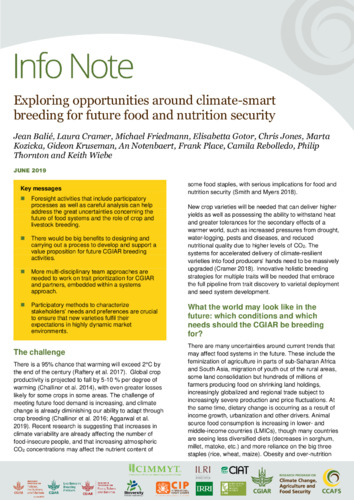Exploring opportunities around climate-smart breeding for future food and nutrition security
Abstract
There is a 95% chance that warming will exceed 2°C by the end of the century (Raftery et al. 2017). Global crop productivity is projected to fall by 5-10 % per degree of warming (Challinor et al. 2014), with even greater losses likely for some crops in some areas. The challenge of meeting future food demand is increasing, and climate change is already diminishing our ability to adapt through crop breeding (Challinor et al. 2016; Aggarwal et al. 2019). Recent research is suggesting that increases in climate variability are already affecting the number of food-insecure people, and that increasing atmospheric CO2 concentrations may affect the nutrient content of some food staples, with serious implications for food and nutrition security (Smith and Myers 2018).
New crop varieties will be needed that can deliver higher yields as well as possessing the ability to withstand heat and greater tolerances for the secondary effects of a warmer world, such as increased pressures from drought, water-logging, pests and diseases, and reduced nutritional quality due to higher levels of CO2. The systems for accelerated delivery of climate-resilient varieties into food producers’ hands need to be massively upgraded (Cramer 2018). Innovative holistic breeding strategies for multiple traits will be needed that embrace the full pipeline from trait discovery to varietal deployment and seed system development.

